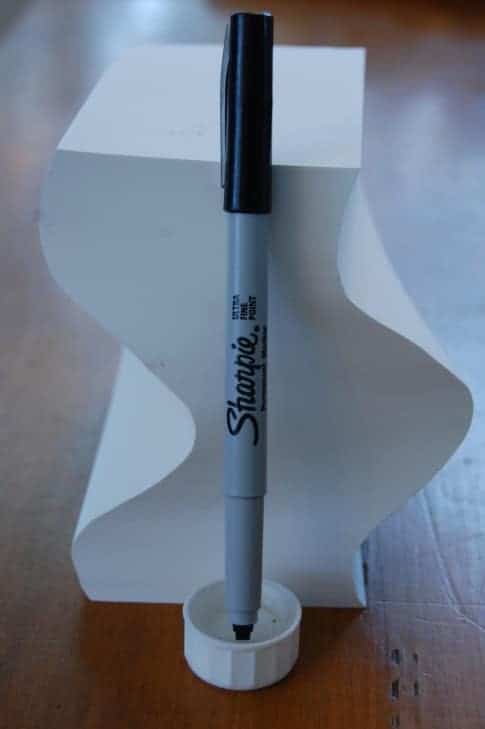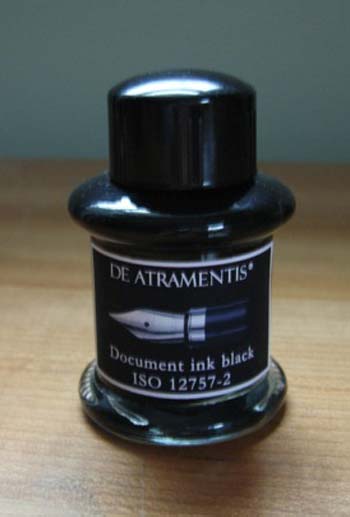I use Sharpie markers on a daily basis. I don't use it heavy enough that that I have to replace a marker every month. I have used the same mini-marker attached to my lanyard for the last 4 years.
To be honest, the low replacement rate is probably because my workplace does supply markers, and I do make an effort to look for and use them before my trusty lanyard min-Sharpie.
I remember once I didn't re-cap it properly. Not only was it a huge drama for the mess it made inside my handbag and its contents, but it was also a well-defined dry period for my marker.
I was excited to learn that acetone, the same stuff as nail polish remover, revives Sharpie markers! And BIC permanent markers.
The tip gets diluted and white, so you have to wait a few hours for the pigment to diffuse back to the tip. I am able to use the marker the next day.
If you want immediate use, you could try
-laying the marker on its side and waiting a few hours
-shaking it
-placing it in warm water to hasten the diffusion process (yay for those chemistry lessons after all!)
There is the noticeable smell of acetone when you use the marker.
Different fancy markers have different solvents. For example, Copic / Prisma uses alcohol. Others use more toxic substances. Be careful while experimenting with solvents- they can be dangerous. One marker reviver commented that the metal body of the marker distorted- that was the indication to him that he was using the wrong solvent.
Tuesday, November 11, 2014
How to rejuvenate water-based markers
I don't play with markers much. My childhood experience with them was not particularly positive. I love the intense colours achieved, but the markers dried out fast or their nibs got soft and splayed quickly.
I recently acquired a bunch of old markers for charity and wondered how to revive them.
The internet says to soak in water.
I tried putting drops of water on the tip. The marker tips soaked up the water hungrily, but it diluted the ink. With FaberCastell connector pens, this technique diluted the tip so much they couldn't write anymore. I thought I had ruined the markers!
In the end, I tried dropping fountain pen ink, drop by drop onto the marker nib. That worked wonderfully. Again, the tips soaked up the fountain ink hungrily. When used, the resulting colour is bright and intense. No dilution. The markers felt heavier after I was done, so they must have gained something.
I was tempted to use a small needle and syringe like this girl:
I will try diluting the fountain pen ink to get more mileage for each marker.
Staedtler Noris Club Aquarell watercolour pencils
There is an sketching art teacher in Sydney who recommends these pencils for their vibrant colour, and she sells them to her students as part of the materials list.
I was in an Officeworks once, and heard a little Thai girl deciding between Staedtler and Faber Castell. She wanted Faber Castell while her mom wanted Staetdler. I opened my big mouth and recommended the Staedtler based on the art teacher and also poor experience / reviews with Faber Castell products. ("Remember when Faber Castell sold good quality student art supplies?... Me neither.").
The price in Australia was quite prohibitative and so I refused to buy any. (Eckersley 12 pack $12.55, 24 pack $24.65, 36 pac $36.70. ebay 12 pack for $13).
Imagine my glee when I happened to be in a Singaporean bookstore and found a 12 pack for $5.95. I bought the 24 pack for $9.90, just because it was cheaper. It was made in Germany and included a free brush.
I made a swatch about a week later and was impressed by the softness of the colour pencils.
I went to a sketchclub outing and a girl complained about the Derwent pencils she had bought. So I let her try these and she liked how soft they were and the colour they imparted.
Very happy with purchase, but don't buy it in Australia!
Pentel Aquash Water Brush
I have had a set of Pentel Aquash waterbrushes for at least a couple of yearst. I never use them in watercolour painting though because I prefer the feel of real brushes- regardless of synthetic or natural bristle.
They come in several sizes and brush tips (round / flat).
Because I didn't use them to sketch much, I thought it would be a great idea to fill it with water that had veridian green hue in it, to sorta use like a ink brush. That worked for a few months, but one day I realised I was scrubbing my brush, not getting any fluid out and possibly damaging the bristles with the dry scrubbing. After looking online, it turns out that these brushes are great as WATER brushes only. With anything else, ink, watercolor, paint, they seem to clog up. I took the brush apart and rinsed off the filter and tried not to lose any small bits down the sink. Voila, it worked again! As a waterbrush should. I tried it a few times and liked the graduation of colour effect I was getting.
Then I packed it up and went on a 10 day trip to Myanmar.
The customs officer asked me suspiciously what it was used for. I was surprised he didn't mention the little oil mixers, but maybe those just looked like oversized contact lens cases.
It was very convenient to use the waterbrush. Holding colour was fine, mixing was fine, the point was fine.
There are a few tricks to remember with this brush:
-keep a tissue or towel nearby to mop excess paint off before you rinse.
-make the gradual diluting of pigment work for you -I try and remember to paint the darkest or more intense areas first.
I do prefer a normal brush to swish around a cup. But this waterbrush is certainly useful and ingenious. There are many different brands available. The popular ones appear to be Sakura Koi ones and Pentel Aquash.
There are different water-release mechanisms: generally squeeze reservoir, but some push-button like a mechanical pencil.
I saw recently they had waterbrushes that dismantle into two pieces for even greater portability, but have not yet desired that enough to buy yet.
Sailor Kiraguro Nano Carbon Black Ink
I hesitate to use fountain pen ink at work for many reasons. One of them is the watersolubility. Things get spilt on them and then they become unreadable.
On the other hand I have never bought a waterproof ink because knowledge of the ink's watersolubility is reassuring when I spill some, or stain my fingers or if the pen leaks.
My explorations in watercolour have got me looking for waterproof inks, that I can watercolour wash over.
The Australian pen and ink world rave about De Atramentis Document ink but I haven't been able to find it in any shops.
Noodlers bulletproof inks are also quite popular, but the shopkeeper told me there is currently a shortage of Noodlers inks.
OK... Another ink I kept hearing about is Sailor Kiraguro Nano Carbon Black Ink. I've always thought highly of
Japanese stationery and it's so easy to order online. I bought a 50ml bottle. You can get packaged of cartridges too.
It's supposed to not clog up fountain pens, hence the fountain-pen-friendly label. It's a matte black black colour because it contains ultra fine particles of carbon. It's called a pigment ink, because the colour sits on the paper, which means it doesn't feather or bleed either.
I've used it for about a week now, in a cheap disposable Pilot fountain pen that I don't mind ruining. I have heard that it can clog up pens if left too long unused. It's been joyful to use and has become my daily pen. I can't believe I didn't buy it earlier. It glides on the paper I use at work, it's dark black, it photocopies well. I haven't seen it smearing, but I'm not sure if that's because I'm careful when writing to blow on the paper or wait for it to dry before I touch it (this is a habit from experience).
Another flash thing about the bottle is that there is a funnel within, so you can fill fountain pens from the bottle to the very last drop. That doesn't do anything for me because I fill my pens with syringe and needle.
On the other hand I have never bought a waterproof ink because knowledge of the ink's watersolubility is reassuring when I spill some, or stain my fingers or if the pen leaks.
My explorations in watercolour have got me looking for waterproof inks, that I can watercolour wash over.
The Australian pen and ink world rave about De Atramentis Document ink but I haven't been able to find it in any shops.
Noodlers bulletproof inks are also quite popular, but the shopkeeper told me there is currently a shortage of Noodlers inks.
OK... Another ink I kept hearing about is Sailor Kiraguro Nano Carbon Black Ink. I've always thought highly of
Japanese stationery and it's so easy to order online. I bought a 50ml bottle. You can get packaged of cartridges too.
It's supposed to not clog up fountain pens, hence the fountain-pen-friendly label. It's a matte black black colour because it contains ultra fine particles of carbon. It's called a pigment ink, because the colour sits on the paper, which means it doesn't feather or bleed either.
I've used it for about a week now, in a cheap disposable Pilot fountain pen that I don't mind ruining. I have heard that it can clog up pens if left too long unused. It's been joyful to use and has become my daily pen. I can't believe I didn't buy it earlier. It glides on the paper I use at work, it's dark black, it photocopies well. I haven't seen it smearing, but I'm not sure if that's because I'm careful when writing to blow on the paper or wait for it to dry before I touch it (this is a habit from experience).
Another flash thing about the bottle is that there is a funnel within, so you can fill fountain pens from the bottle to the very last drop. That doesn't do anything for me because I fill my pens with syringe and needle.
Subscribe to:
Posts (Atom)











